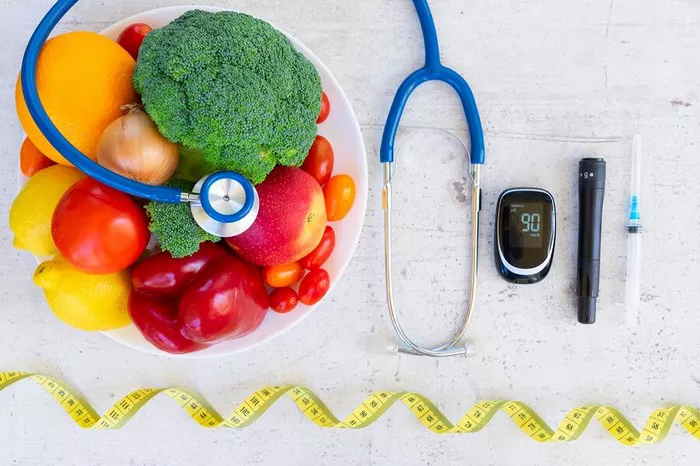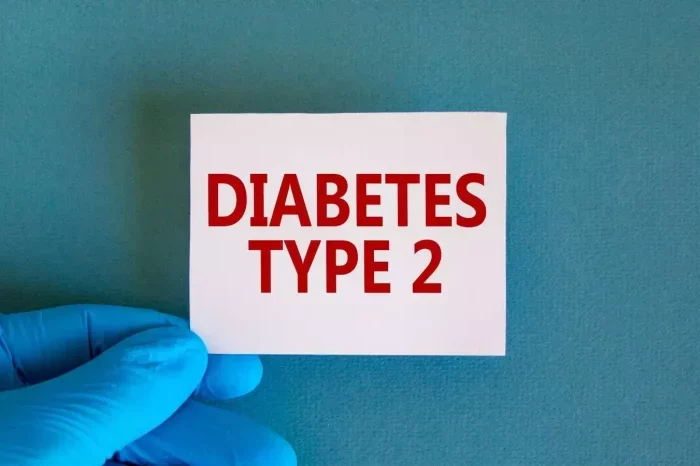Managing diabetes effectively often hinges on making wise dietary choices. One of the most important meals to focus on is lunch, as it helps sustain energy throughout the day and keeps blood sugar levels stable. For diabetics, choosing the right combination of nutrients is essential in maintaining glycemic control, preventing complications, and supporting overall health. In this article, we’ll explore what constitutes the best lunch for a diabetic, considering the balance of carbohydrates, proteins, fats, fiber, and the impact of glycemic load.
Understanding the Role of Lunch in a Diabetic Diet
Lunch plays a critical role in the daily routine of a diabetic because it helps maintain blood glucose levels between meals. It also ensures that energy remains stable throughout the afternoon, helping to prevent post-lunch dips or spikes in blood sugar. A well-composed lunch for a diabetic should include foods that support these goals.
Balancing macronutrients is key for diabetics, especially when it comes to carbohydrates. While carbohydrates impact blood sugar more than proteins and fats, they are still a necessary part of a balanced meal. The key is choosing the right type of carbs and combining them with lean proteins and healthy fats to slow down digestion and absorption, ultimately leading to better blood sugar control.
Carbohydrates: Choosing Wisely
When it comes to carbohydrates, the focus should be on complex, low-glycemic index (GI) options. Low-GI carbohydrates are digested more slowly, which helps prevent rapid spikes in blood sugar. Examples include whole grains, legumes, vegetables, and certain fruits.
Whole Grains: Opt for whole grain bread, quinoa, brown rice, or barley. These grains have a lower glycemic index compared to refined grains like white bread or pasta. They are rich in fiber, which helps slow digestion and stabilize blood sugar levels.
Vegetables: Non-starchy vegetables should be a cornerstone of a diabetic’s lunch. These include leafy greens like spinach, kale, and arugula, as well as cucumbers, bell peppers, tomatoes, and broccoli. They are low in calories and carbs while being high in essential vitamins, minerals, and fiber.
Fruits: Diabetics can enjoy certain fruits in moderation. Berries, such as strawberries, blueberries, and raspberries, are excellent choices due to their low glycemic load and high antioxidant content. Apples and pears are also good options because of their fiber content.
Legumes: Beans, lentils, and chickpeas are nutrient-dense foods that are high in protein and fiber. They provide slow-releasing carbohydrates that help regulate blood sugar levels.
Protein: Building Satiety and Blood Sugar Control
Protein is vital for diabetics as it not only helps repair and build tissues but also plays a role in slowing down the absorption of carbohydrates, leading to more stable blood glucose levels. Including a source of lean protein in lunch is crucial.
Lean Meats and Poultry: Skinless chicken, turkey, and lean cuts of beef or pork provide high-quality protein without excessive saturated fat, which can negatively impact cardiovascular health, a common concern for diabetics.
Fish: Fatty fish like salmon, mackerel, and sardines are excellent sources of omega-3 fatty acids, which support heart health. Diabetics should aim to include fish in their lunches a few times a week.
Plant-Based Proteins: Tofu, tempeh, and edamame are great alternatives for those who prefer plant-based diets. They are rich in protein and, in the case of edamame, also provide fiber.
Eggs: Eggs are a versatile and affordable protein source. While they do contain cholesterol, research shows that moderate egg consumption does not significantly affect heart disease risk for most people, making them a suitable option for diabetics.
Dairy and Alternatives: Low-fat or non-fat dairy products, such as Greek yogurt and cottage cheese, can also be good sources of protein. For those who are lactose intolerant or prefer plant-based options, unsweetened almond milk, soy milk, or other dairy alternatives work well.
Healthy Fats: Supporting Metabolism and Blood Sugar Stability
Fats are often misunderstood, but they are an important component of a diabetic-friendly diet. Healthy fats, particularly unsaturated fats, help improve insulin sensitivity and support heart health.
Avocado: Avocado is an excellent source of monounsaturated fats, which help improve cholesterol levels and support insulin sensitivity. Adding avocado slices to a salad or sandwich is a smart choice.
Nuts and Seeds: Almonds, walnuts, chia seeds, and flaxseeds are rich in healthy fats, fiber, and antioxidants. They also provide a crunchy texture and can be sprinkled on salads, blended into smoothies, or eaten as a snack.
Olive Oil: Using extra virgin olive oil as a dressing for salads or to sauté vegetables is a great way to incorporate heart-healthy monounsaturated fats into lunch. Olive oil has been shown to have anti-inflammatory effects and can support better blood sugar control.
Fatty Fish: As mentioned earlier, fatty fish like salmon and mackerel provide omega-3 fatty acids, which are essential for heart health. For diabetics, this is crucial as they are at a higher risk for cardiovascular complications.
Fiber: A Diabetic’s Best Friend
Fiber is perhaps the most important nutrient for diabetics when it comes to lunch. It helps slow the digestion and absorption of carbohydrates, leading to more stable blood sugar levels after meals. Fiber also promotes a feeling of fullness, which can help with weight management.
Vegetables: As already noted, non-starchy vegetables are loaded with fiber. A large salad filled with leafy greens, bell peppers, cucumbers, and carrots provides a substantial amount of fiber.
Whole Grains: Incorporating fiber-rich grains like quinoa, brown rice, or whole wheat bread is important for sustaining energy and preventing rapid blood sugar spikes.
Legumes: Beans, lentils, and chickpeas are powerhouse foods that combine protein and fiber, making them ideal for diabetics. A lentil or chickpea salad, for instance, can be an excellent choice for lunch.
Nuts and Seeds: Adding a handful of chia seeds, flaxseeds, or almonds to a salad or yogurt provides additional fiber, supporting healthy digestion and blood sugar stability.
Portion Control and Timing
While it’s important to choose the right types of food, portion control is equally vital for diabetics. Eating large portions of even the healthiest foods can lead to blood sugar spikes. Diabetics should aim for balanced portion sizes that provide enough energy without overwhelming the body with too many carbohydrates at once.
Spreading meals and snacks evenly throughout the day can also help maintain stable blood glucose levels. For lunch, aiming for a moderate-sized meal that keeps hunger at bay until dinner is a good strategy. It’s often helpful to include a healthy snack, such as a small handful of nuts or a piece of fruit, between meals if needed.
Sample Lunch Ideas for Diabetics
Now that we’ve covered the basics of what makes up a balanced lunch for a diabetic, here are a few sample lunch ideas that incorporate these principles:
Grilled Chicken Salad: A large salad made with grilled chicken, mixed greens, cucumber, cherry tomatoes, avocado, and a sprinkle of almonds, dressed with olive oil and lemon juice. This meal combines lean protein, healthy fats, fiber, and low-GI vegetables, making it an ideal diabetic lunch.
Quinoa and Vegetable Bowl: Quinoa, roasted vegetables (such as bell peppers, zucchini, and eggplant), chickpeas, and a dollop of hummus provide a satisfying mix of protein, fiber, and healthy fats. This bowl can be topped with a tahini dressing for extra flavor and nutrition.
Tuna Salad Wrap: A whole grain wrap filled with tuna salad (made with plain Greek yogurt instead of mayonnaise), spinach, and avocado slices. The combination of protein, fiber, and healthy fats makes this wrap a great choice for blood sugar control.
Lentil Soup with a Side Salad: A hearty bowl of lentil soup paired with a side salad made of mixed greens, cucumber, and a small amount of feta cheese. Lentils provide fiber and protein, while the salad offers additional fiber and low-GI vegetables.
Turkey and Avocado Sandwich: A whole grain sandwich with lean turkey breast, avocado slices, spinach, and mustard. This meal provides protein, fiber, and healthy fats, all of which help stabilize blood sugar levels.
Hydration: An Essential Consideration
Alongside food, hydration plays a critical role in managing diabetes. Drinking water throughout the day helps regulate blood sugar levels and prevent dehydration, which can worsen blood sugar imbalances. It’s essential to avoid sugary drinks like soda, sweetened tea, or fruit juice, as these can lead to rapid spikes in blood sugar.
Unsweetened tea, sparkling water, and black coffee (in moderation) are good alternatives for diabetics looking for variety in their beverages. Herbal teas, such as peppermint or chamomile, can also be hydrating and soothing.
See also: Which Fruit is Good for Diabetes Patients‘s Blood Sugar?
Conclusion
The best lunch for a diabetic to eat is one that includes a balance of low-glycemic carbohydrates, lean proteins, healthy fats, and plenty of fiber. This balance not only helps regulate blood sugar levels but also supports heart health and overall well-being. Portion control and hydration are key factors that should not be overlooked. By incorporating whole grains, lean proteins, non-starchy vegetables, and healthy fats into their lunches, diabetics can enjoy delicious meals while maintaining good blood sugar control. Planning meals ahead of time and being mindful of food choices can empower diabetics to manage their condition effectively and live healthier lives.
Related topics:
Is Brown Rice Good for Diabetics to Eat?
























